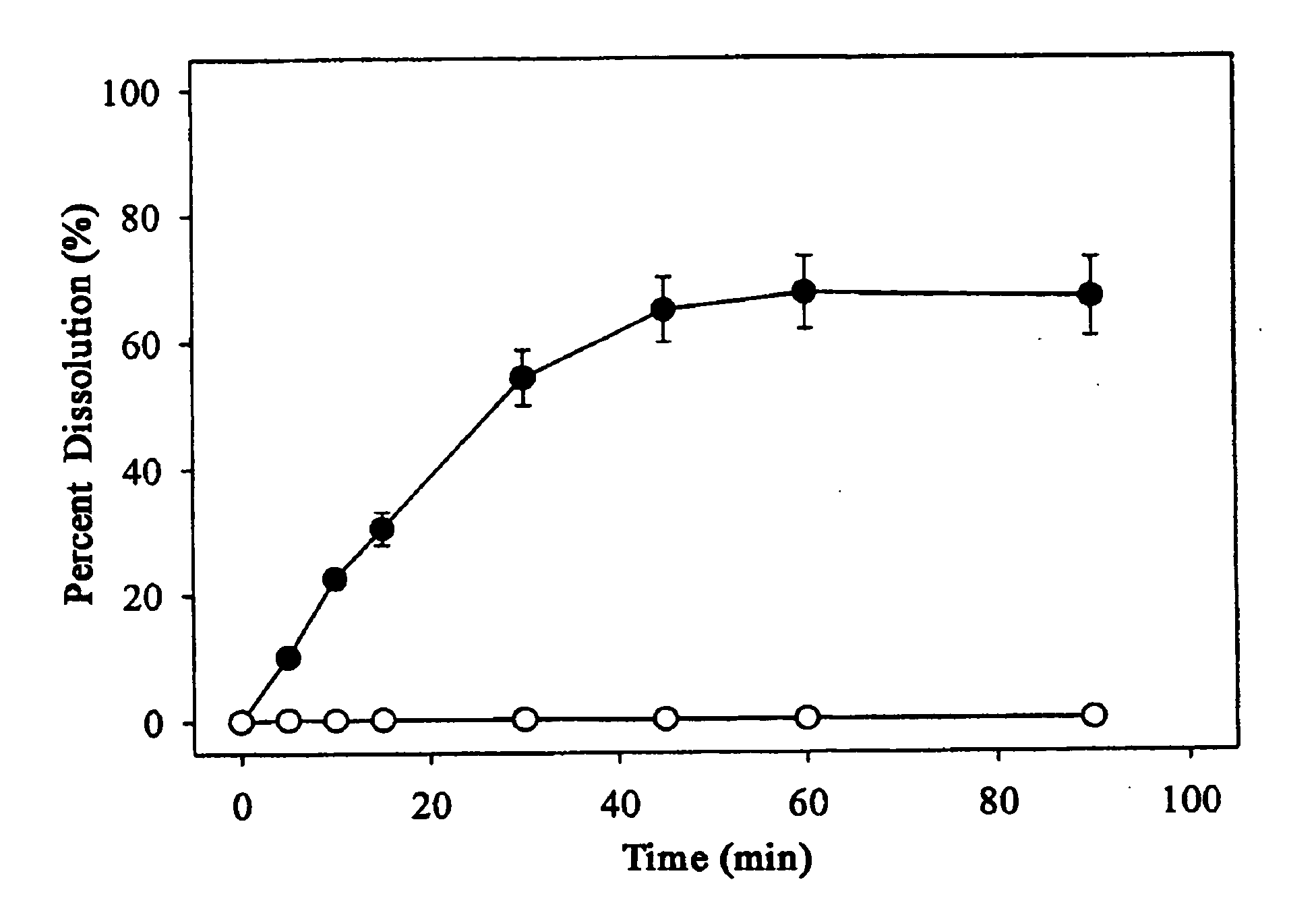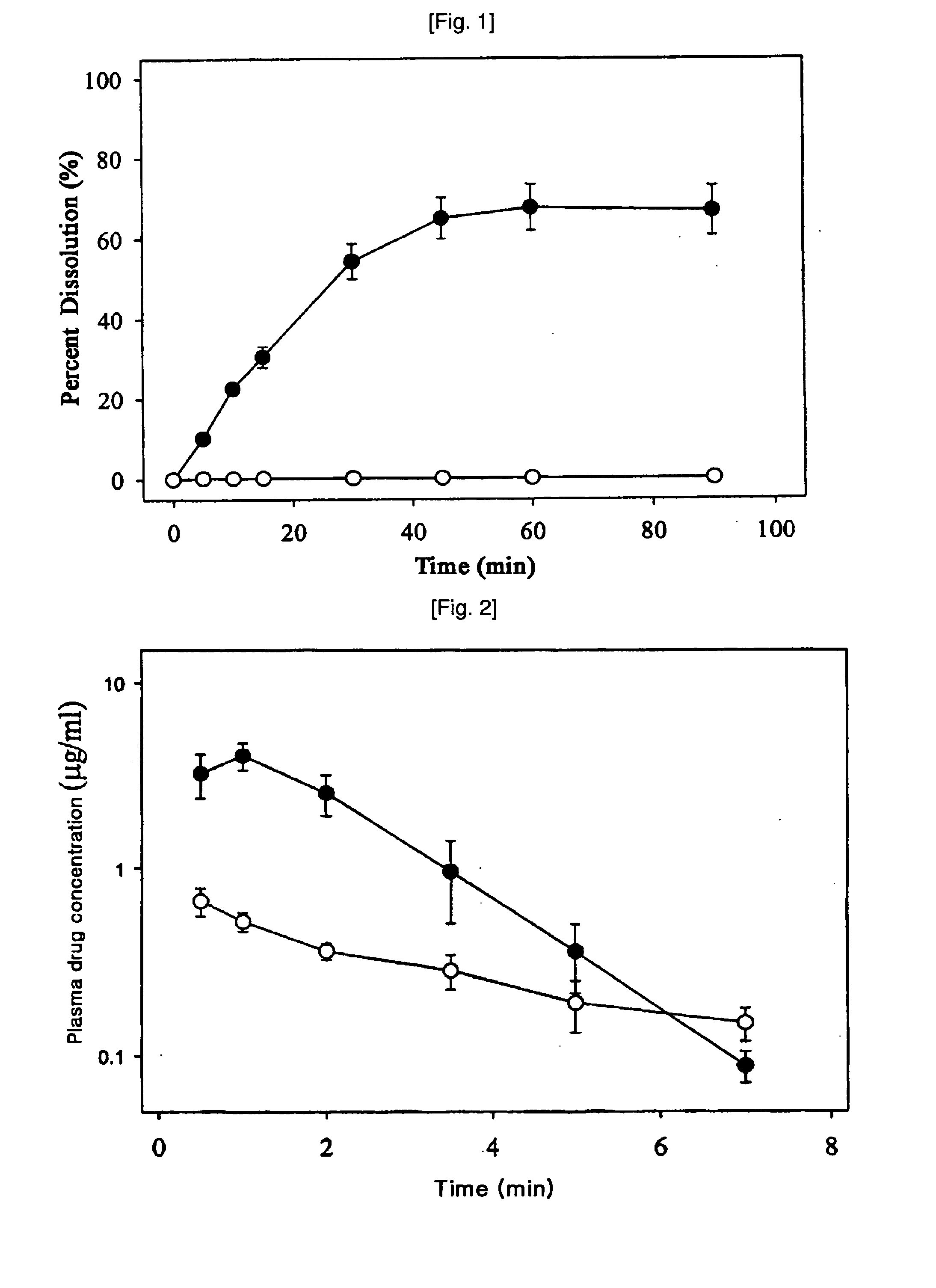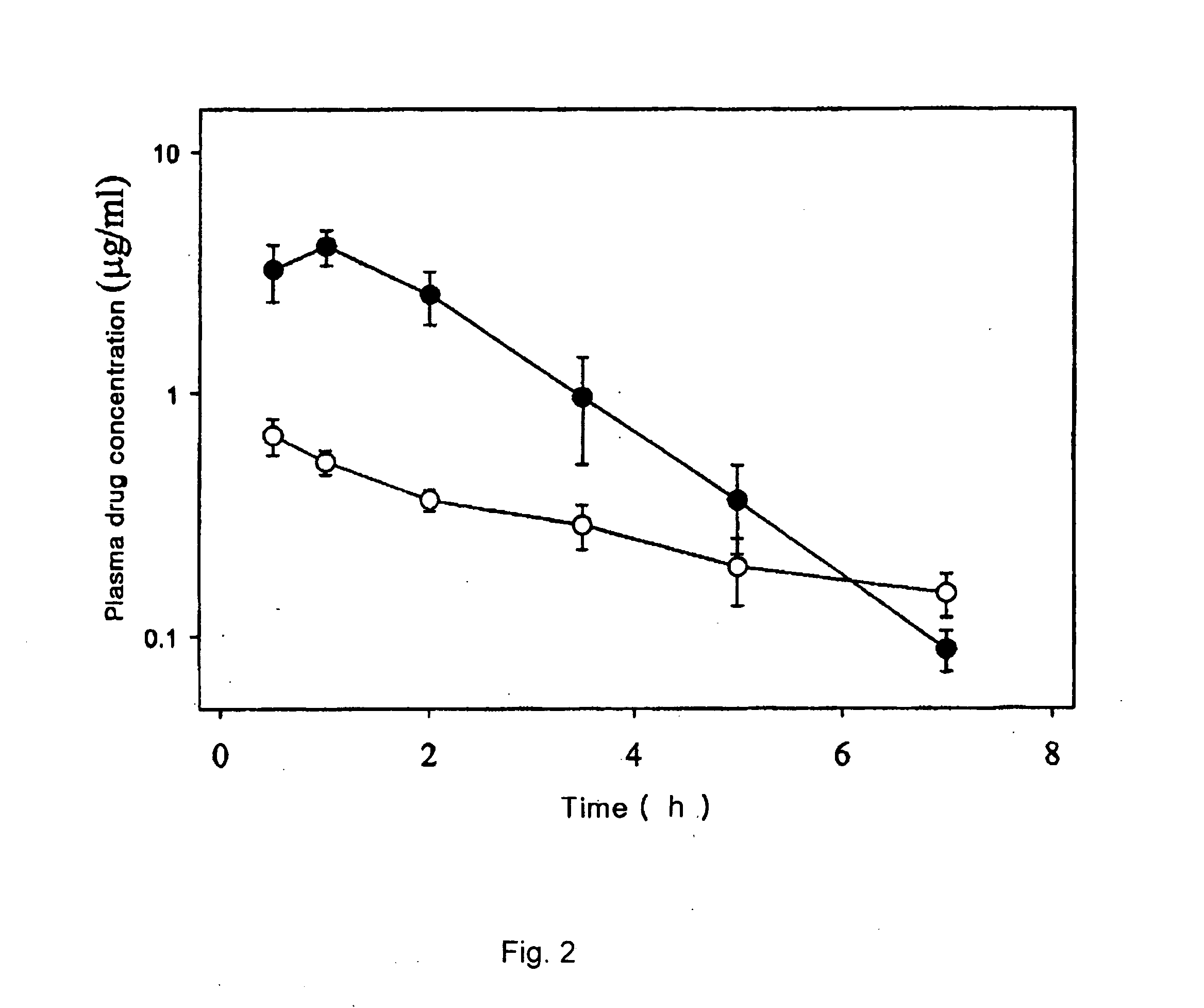Thiourea Derivative-Containing Pharmaceutical Composition Having Improved Solubility and Bioavailability
a technology of pharmaceutical compositions and derivatives, applied in the field of thiourea, can solve the problems of difficult to make liquid formulations, and many problems in solid formulations containing same, and achieve excellent antagonistic activity and improved solubility and bioavailability
- Summary
- Abstract
- Description
- Claims
- Application Information
AI Technical Summary
Benefits of technology
Problems solved by technology
Method used
Image
Examples
experimental example 1
[0068] 0.4 g of 1-(4-t-butylbenzyl)-3-(3-fluoro-4-methanesulfonylaminobenzyl)thiourea (Compound 1) was added to each 10 ml of 0, 1.5, 3.5, 7.0, 14.0 and 28.0 w / v % aqueous solutions of 2-hydroxypropyl-β-cyclodextrin. The resulting mixture was stirred for 72 hours, filtered through a 0.2 micrometer filter paper. The concentration of Compound 1 in the filtrate was determined by high performance liquid chromatography (HPLC) and the solubility of Compound 1 depending on the concentration of 2-hydroxypropyl-β-cyclodextrin is presented in Table 1.
TABLE 1Conc. of 2-hydroxypropyl-β-cyclodextrin (w / v %)Solubility (mg / ml)00.011.50.403.51.047.04.1814.012.2328.028.99
[0069] The result in Table 1 shows that the solubility of Compound 1 becomes higher with the concentration of 2-hydroxypropyl-β-cyclodextrin.
experimental example 2
[0070] 0.4 g of 1-(4-t-butylbenzyl)-3-(3-fluoro-4-methanesulfonylaminobenzyl)thiourea (Compound 1) was added to each 10 ml of 0, 1.5, 3.5, 7.0, 14.0 and 28.0 w / v % 2-hydroxypropyl-β-cyclodextrin solution in glycine buffer (pH 10.5). The resulting mixture was stirred for 72 hours, filtered through a 0.2 micrometer filter paper.
[0071] The concentration of Compound 1 in the filtrate was determined by high performance liquid chromatography (HPLC) and the solubility of Compound 1 depending on the concentration of 2-hylroxypropyl-β-cyclodextrin is presented in Table 2.
TABLE 2Conc. of 2-hydroxypropyl-β-cyclodextrin (w / v %)Solubility (mg / ml)00.051.52.703.54.807.09.6214.018.0128.032.47
[0072] The result in Table 2 shows that the solubility of Compound 1 becomes higher with the concentration of 2-hydroxypropyl-β-cyclodextrin.
examples 1-3
[0073] 14, 20 or 28 g of 2-hydroxypropyl-β-cyclodextrin was put to a volumetric flask, deionized water was added thereto up to 100 ml, and the mixture was stirred. 2 g of 1-(4-t-butylbenzyl)-3-(3-fluoro-4-methanesulfonylaminobenzyl)thiourea (Compound 1) was added thereto and the mixture was stirred until became transparent. The solution was filtered through 0.2 micrometer filter paper, and the filtrate was lyophilized to obtain a white solid, which was then passed through a #40 sieve.
TABLE 3Ratio of Compound 1:2-hydroxypropyl-β-cyclodextrinExample 12 g:14 gExample 22 g:20 gExample 32 g:28 g
PUM
| Property | Measurement | Unit |
|---|---|---|
| Fraction | aaaaa | aaaaa |
| Weight | aaaaa | aaaaa |
| Solubility (mass) | aaaaa | aaaaa |
Abstract
Description
Claims
Application Information
 Login to View More
Login to View More - R&D
- Intellectual Property
- Life Sciences
- Materials
- Tech Scout
- Unparalleled Data Quality
- Higher Quality Content
- 60% Fewer Hallucinations
Browse by: Latest US Patents, China's latest patents, Technical Efficacy Thesaurus, Application Domain, Technology Topic, Popular Technical Reports.
© 2025 PatSnap. All rights reserved.Legal|Privacy policy|Modern Slavery Act Transparency Statement|Sitemap|About US| Contact US: help@patsnap.com



